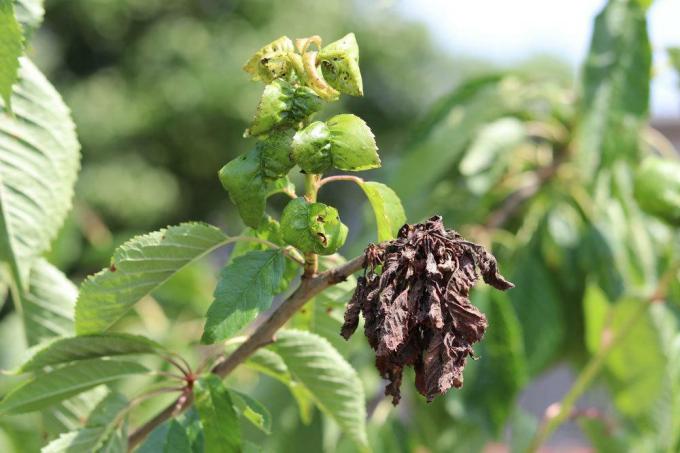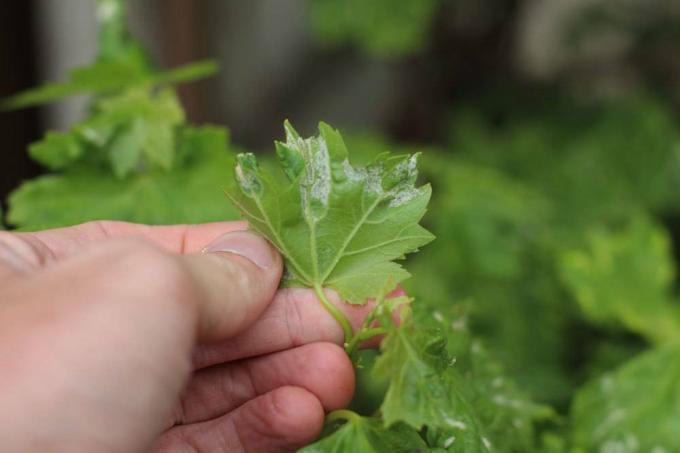
table of contents
- Recognize and fight diseases in cherry laurel
- Leaf margin necrosis
- Vine weevil
- Powdery mildew
- Wrong mildew
- Frost damage
- Nectaries
- Shotgun Sickness
- Branch drought (peak drought)
The cherry laurel is often cultivated in hedges in the local latitudes. Because the evergreen plant offers an ideal privacy screen at any time of the year. In addition, it is actually a hardy plant. But the cherry laurel is not immune to diseases that can be caused by pests, fungi or viruses. The following article deals with the diseases of cherry laurel, how they are recognized and treated.
Recognize and fight diseases in cherry laurel
If the cherry laurel suddenly shows signs that it is not feeling well, then the causes must be found. As a rule, the leaves and also the branches show irregularities in color, shape or growth when the plant is diseased. It is now important to find out what disease it is and how it can be combated. The eight most common diseases caused by fungi, viruses, or pests include the following:
- Leaf margin necrosis
- Vine weevil
- Powdery mildew
- Wrong mildew
- Frost damage
- Nectaries
- Shotgun Sickness
- Branch drought
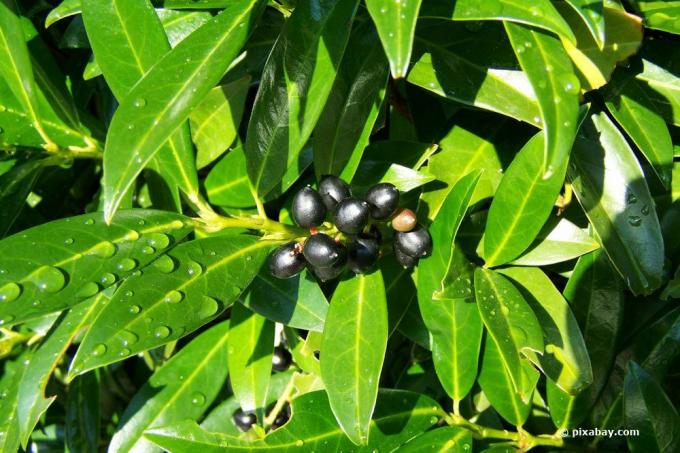
Leaf margin necrosis
If the older leaves of the cherry laurel are brown at the edges first and if the leaf later becomes completely dry and falls off, then it may be a leaf margin necrosis. This disease is caused by a wrong pouring evoked. If there is too much sodium in the water, this is harmful to the plant. If the symptoms are recognized, the following should be used:
- remove damaged leaves
- watch out for new damaged leaves
- from now on use rainwater for watering
- has less sodium than groundwater
- Plant recovers over time
To prevent leaf margin necrosis from occurring, the cherry laurel should only ever be poured with rainwater, or alternatively with filtered water. In this way, an excess of sodium can be avoided.
Vine weevil
A very common pest on the cherry laurel is the black weevil. Even if this is not a disease in the strict sense, this pest can become a major problem for the plant. The adult nocturnal beetles eat the leaves, which reveals an infestation. The larvae, however, are the real problem. Because these live underground and feed on the roots, which means that the cherry laurel can die off altogether. If leaf damage is found, the following procedure should therefore be used:
- check for bugs
- in the evening with a flashlight
- then there are usually larvae in the soil
- take action against this with nematodes
- give with the irrigation water
- if the roots are damaged, leaves turn yellow
- dry up and fall off
- If the plant is badly damaged, it can no longer be saved
If it is a cherry laurel cultivated as a solitary, then the first aid measure can be to dig up and examine the roots for larvae infestation. Then the plant is replanted in a fresh substrate. As a precaution, it should also be watered with nematodes.
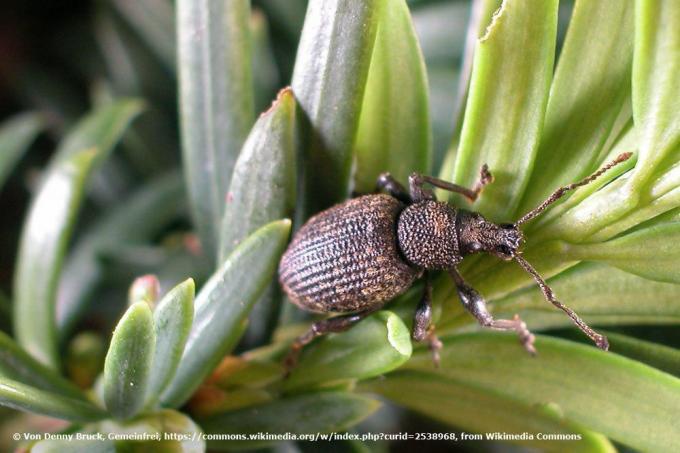
Powdery mildew
Powdery mildew is a very widespread fungal disease that can also affect cherry laurel if the conditions are right for the fungus. With the cherry laurel, however, the symptoms are a little different. Because Podosphaera tridactyla forms small bulges on the upper side of the leaves. The young leaves in particular are affected by the fungus, but older leaves are usually not attacked. The leaves become infected with the fungus via the underside of the leaf, causing the epidermis to die off, resulting in deformations and cracks. Exercise caution and combat if the following symptoms occur:
- young shoots and leaves turn light in color
- Leaves do not grow large
- Leaves curl
- Detect infestation with a magnifying glass
- white, small fungal spores
- Remove leaves and shoots
- Dispose of with residual waste
- Spray with network sulfur from the trade
As a preventive measure, the cherry laurel should not be cut in summer, as the new leaves are particularly at risk. A cut in spring or late winter is better here.
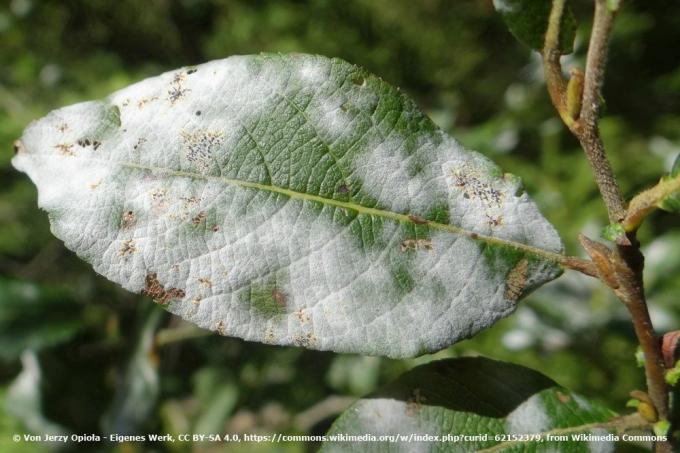
Wrong mildew
If downy mildew shows up on the plant, it can be recognized by a white mold on the underside of the leaf. If a leaf curls, it should be searched for clues, because downy mildew can seriously damage the appearance of the cherry laurel. If an infestation is detected, the following should be done immediately:
- Damage mostly in autumn
- Plants infested in summer are weakened
- check the soil condition here
- renew substrate if necessary
- must be permeable
- Cut off affected shoots and leaves
- Dispose of with residual waste
- new shoots and leaves appear in spring
- Any holes that may have formed in the hedge will overgrow
- Spray with agents from the trade against downy mildew
Frost damage
Even if cherry laurel is actually hardy, the leaves can still be damaged by frost. So that no viruses, bacteria or fungi can penetrate the damaged shoots and leaves, you should remove them with sharp and disinfected secateurs. You can then easily dispose of the affected parts of the plant on the compost. You can prevent frost damage as follows:
- Mulching earth
- Place plant fleece over the hedge in severe frost
- Wrap solitaire with plant fleece
Nectaries
If there are dots on the underside of the leaves of the cherry laurel, then it is usually only an alleged damage. Because actually these nectaries are only the glands from which the sugar-containing cell sap can escape. Insects use it for food intake, but unfortunately it also attracts aphids. The nectaries show up first in green, then from reddish to brown and black. But this abnormality is not a cause for concern and is actually completely normal with cherry laurel.
Shotgun Sickness
The fungus Stigmina carpophila causes the shotgun disease that often occurs in Prunus laurocerasus. Because in the local latitudes it is often still very humid and wet, especially in spring, the ideal living conditions for this fungus. Fighting the disease should be initiated as follows immediately after detection:
- Outbreak between May and June
- young leaves affected
- yellow, unevenly marbled areas
- die off
- fall out of the infected leaf in a circular shape
- remove all affected leaves and shoots
- do not add to the compost
- Otherwise, fungus will spread throughout the garden
- treat with fungicide
If the new shoot remains healthy after the treatment, it can be assumed that the disease has been defeated. In order to prevent a new outbreak, however, you should also remove all fallen leaves under the plant, as otherwise the fungal spores can survive here until the next year. The disease is not life-threatening, but it does reduce the decorative appearance of the hedge.

Branch drought (peak drought)
The branch or tip drought is also a fungal attack, the fungus Monilia laxa. In order to recognize and combat this, the symptoms must be known. Branches and the tips of the shoots turn dark and hang limply, as can also be the case with frost damage. The flowers of Prunus laurocerasus are also often affected by this. In the event of a branch drought, you should immediately act as follows:
- remove all affected twigs and shoots
- right at the base
- not just the affected areas
- do not add to the compost
- Branches are highly contagious to other plants
- Put well closed in the residual waste
- alternatively burn
- Get a branch drought product from a retailer
- Use according to the manufacturer's instructions
